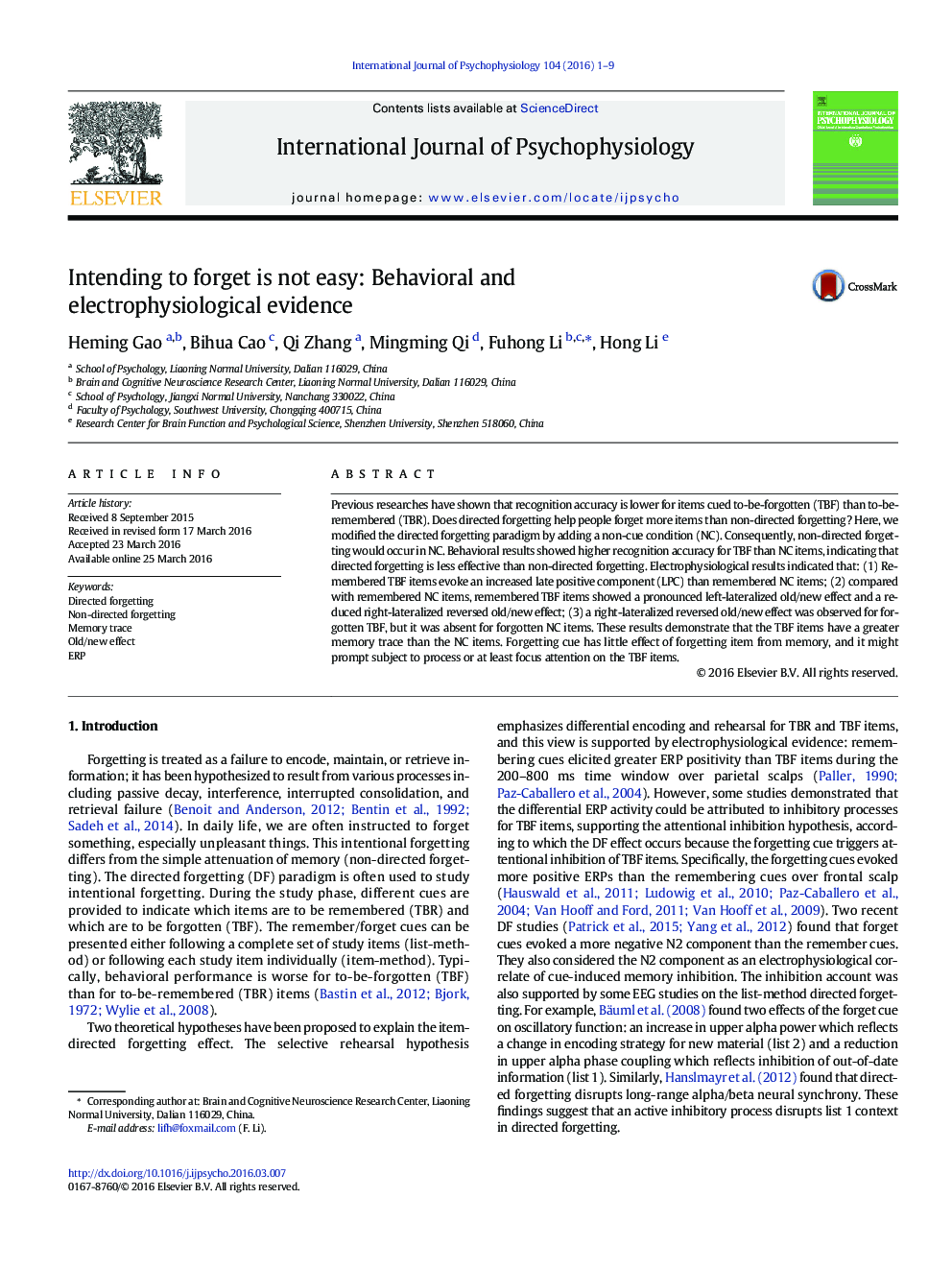| کد مقاله | کد نشریه | سال انتشار | مقاله انگلیسی | نسخه تمام متن |
|---|---|---|---|---|
| 929582 | 1474392 | 2016 | 9 صفحه PDF | دانلود رایگان |
• A non-cue condition was added to the item-method directed forgetting paradigm.
• More positive LPC component was evoked for r-TBF versus r-NC items.
• The r-NC items demonstrated a reduced left-lateralized ERP old/new effect compared to r-TBF items.
• Directed forgetting shows less forgetting than non-directed forgetting.
Previous researches have shown that recognition accuracy is lower for items cued to-be-forgotten (TBF) than to-be-remembered (TBR). Does directed forgetting help people forget more items than non-directed forgetting? Here, we modified the directed forgetting paradigm by adding a non-cue condition (NC). Consequently, non-directed forgetting would occur in NC. Behavioral results showed higher recognition accuracy for TBF than NC items, indicating that directed forgetting is less effective than non-directed forgetting. Electrophysiological results indicated that: (1) Remembered TBF items evoke an increased late positive component (LPC) than remembered NC items; (2) compared with remembered NC items, remembered TBF items showed a pronounced left-lateralized old/new effect and a reduced right-lateralized reversed old/new effect; (3) a right-lateralized reversed old/new effect was observed for forgotten TBF, but it was absent for forgotten NC items. These results demonstrate that the TBF items have a greater memory trace than the NC items. Forgetting cue has little effect of forgetting item from memory, and it might prompt subject to process or at least focus attention on the TBF items.
Journal: International Journal of Psychophysiology - Volume 104, June 2016, Pages 1–9
